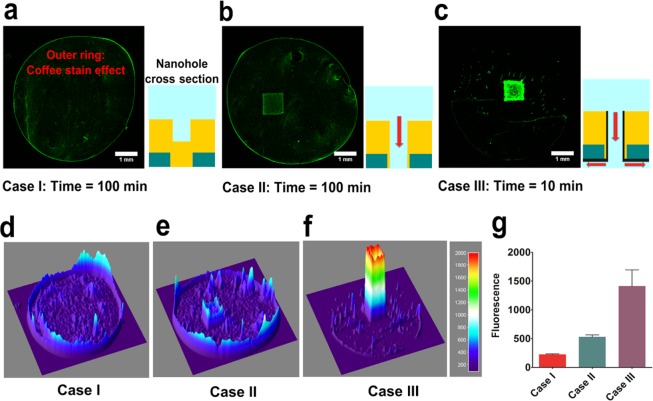Figure 5.
Bead concentration and time taken for consumption of solution over nanohole arrays for three cases. (a) Case I: Accumulation of 2 μm polystyrene beads after evaporation of a 10 μL drop over dead-ended nanohole arrays. The schematic shows cross section of a single dead-ended nanohole for this case. (b) Case II: The same experiment performed over suspended nanohole arrays with metal-coated (hydrophobic) sidewalls. Evaporation from open end of nanoholes promotes directed flow and concentration. (c) Case III: These samples had silica deposited on the back surface and sidewalls, resulting in surface-tension-directed flow. (d–f) Surface plots corresponding to (a–c) representing the intensity of fluorescence over the suspended membrane. (g) Average fluorescence intensity calculated from beads accumulated over the suspended membranes after 3 rounds of experiments. These results demonstrate that Case III surface-tension-induced flow-through promotes the most effective concentration of particles over the nanoholes and is an order of magnitude faster than purely evaporation-driven concentration.

